Your Home, a Holiday Scent Story: 3 Pro Ways to Create Natural Fragrance
I think we can all agree on one thing: the holidays are defined by scent. It’s that immediate wave of spice, citrus, and pine that signals warmth and celebration the second you walk through the door. But let’s be honest, most store-bought air fresheners and candles just don’t capture that authentic magic. They often smell a bit… synthetic.
In this article
The secret I learned a long time ago is that the most memorable aromas aren’t manufactured; they’re crafted from real, simple ingredients. Creating this atmosphere doesn’t require expensive gadgets or chemical sprays. It just takes a little bit of know-how. So, in this guide, I’m going to walk you through the three best methods for making your home truly smell like the holidays, from a quick fix to a long-lasting project.
We’ll cover the fast and powerful simmer pot, the classic and beautiful orange pomander, and the patient art of true potpourri. I’ll give you the ‘why’ behind the ‘how,’ so you can master these techniques and even create your own signature blends.
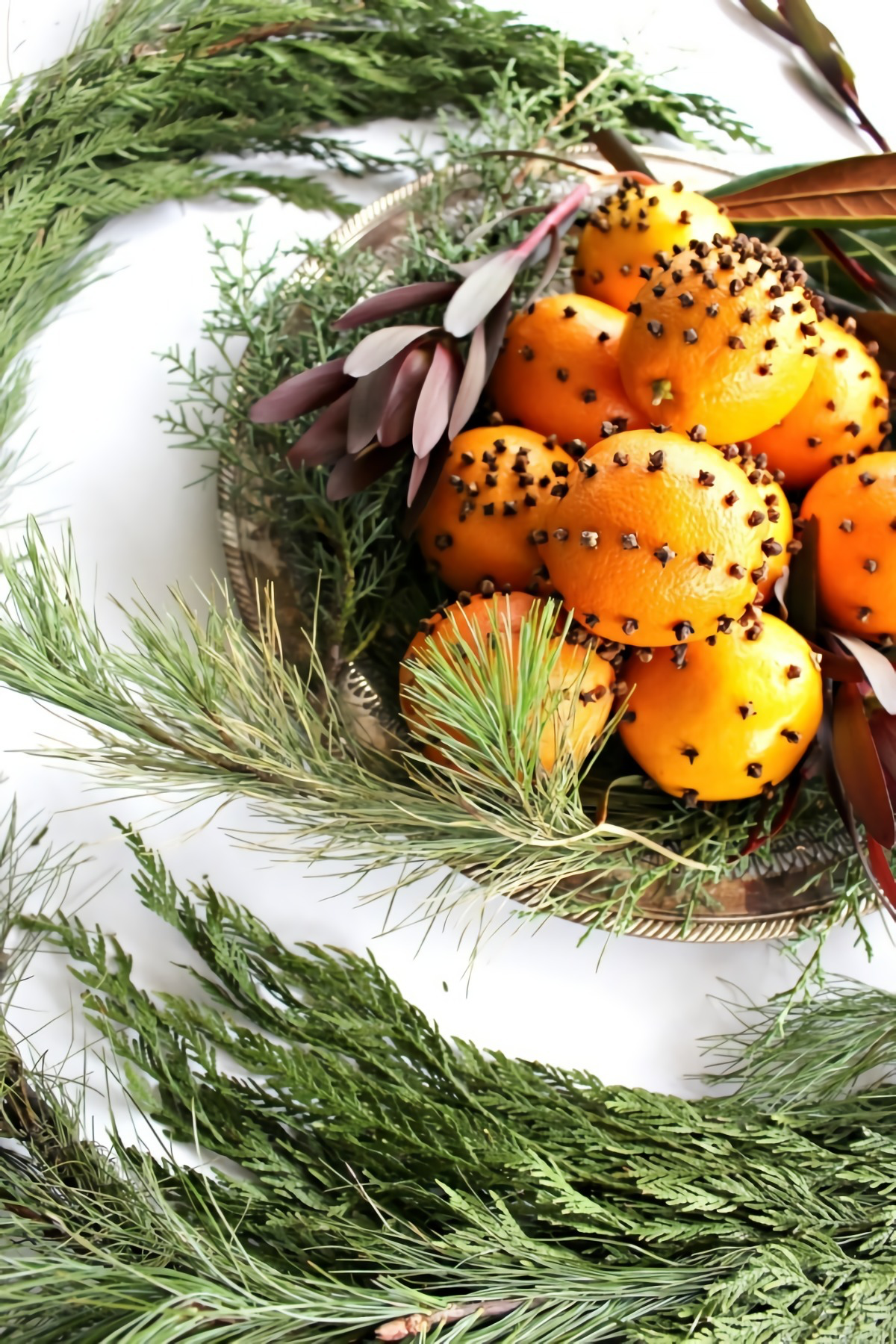
First, a Little Scent Science (The Fun Part!)
Before we start simmering and spicing, it helps to know what’s actually happening. This is the little bit of science that separates just mixing stuff in a pot from thoughtfully creating a fragrance. Scent is all about tiny molecules in plants and spices that love to float into the air. Our job is to gently encourage them to do just that.
Heat & Steam (The Simmer Pot): When you heat water with things like cinnamon sticks and orange peels, you’re basically creating a mini-distillery on your stovetop. The heat gives the water molecules energy, turning them into steam. As this steam rises, it carries all those fragrant plant molecules with it, spreading them throughout your home. This is why it works so fast! The key here is gentle heat. A crazy, rolling boil can actually burn the delicate compounds and make things smell scorched. A low, lazy simmer is your best friend.
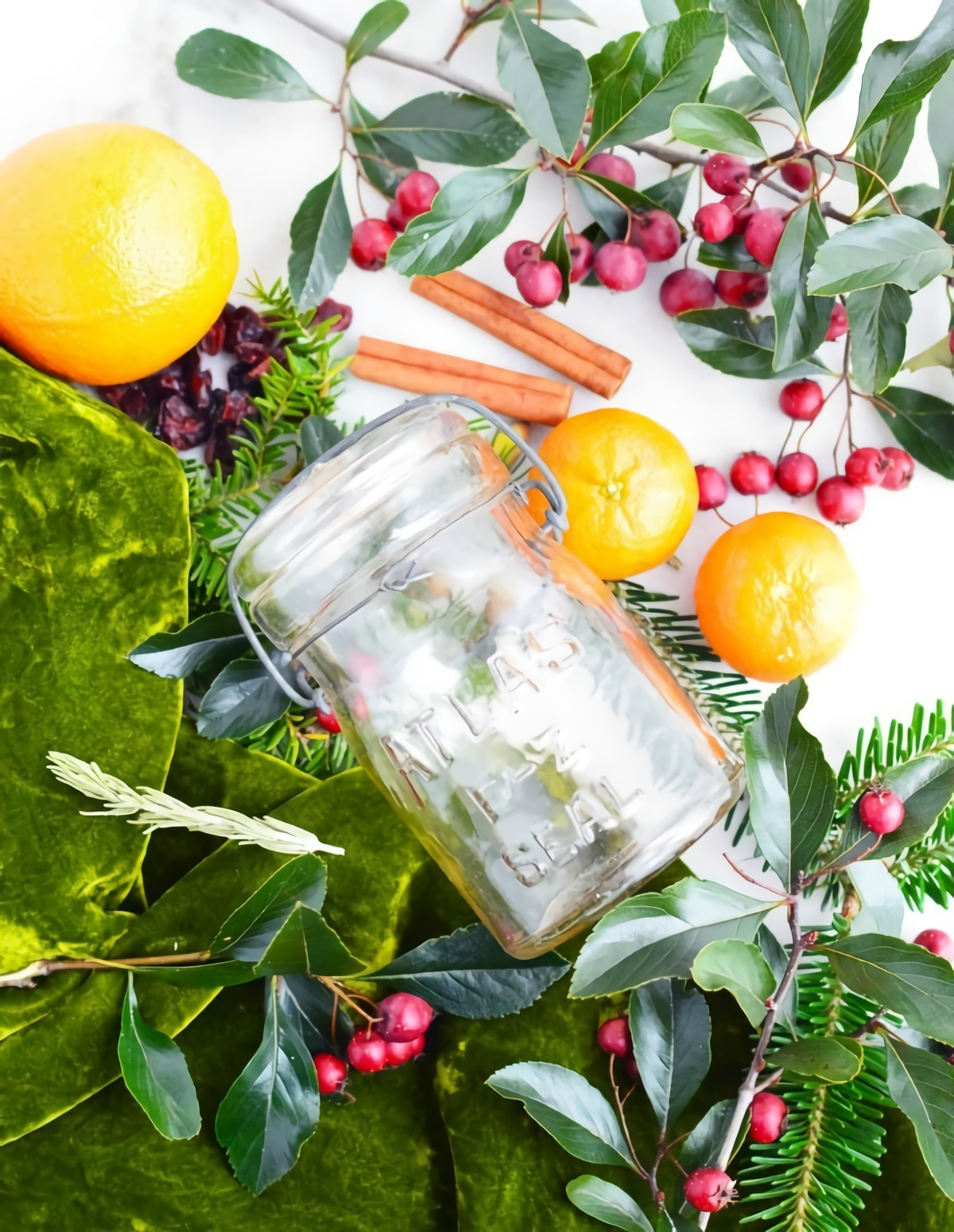
Slow Evaporation (Dry Potpourri): Dry potpourri works much more slowly. The aromatic oils in dried botanicals and added essential oils just gradually escape into the air. The problem? Most essential oils are super volatile and will disappear in a few days without some help. That’s where a ‘fixative’ comes in. Think of it as a scent anchor. Orris root powder is the traditional go-to. It has an incredible ability to grab onto scent molecules and release them super slowly. Without a fixative, you’ve just got a pretty bowl of dried stuff. With one, you have a functional, long-lasting air freshener.
Puncturing the Peel (The Orange Pomander): This method is beautifully direct. A citrus peel is packed with tiny sacs of aromatic oil. When you poke a clove through the peel, you burst those sacs. The oil seeps out and slowly evaporates, releasing that amazing citrus-spice scent. The clove itself adds its own powerful aroma, and as the orange dries out over weeks, the two scents just melt together into something magical.
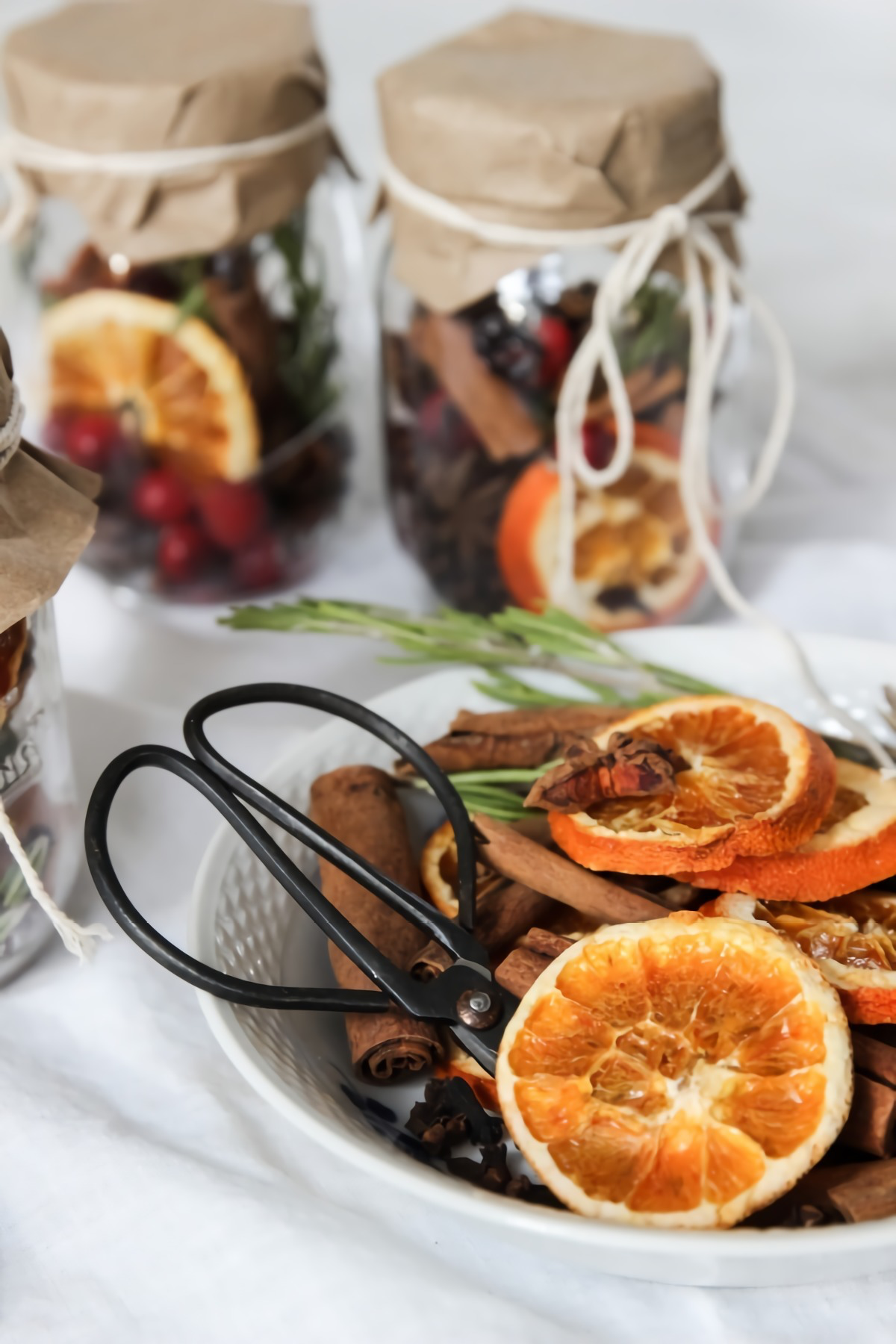
Method 1: The Stovetop Simmer Pot
This is, without a doubt, the fastest way to fill your entire home with holiday cheer. It’s my go-to trick about an hour before people are due to arrive. You’ll start smelling the magic in about 15-20 minutes as the water heats up. But there’s a right way and a wrong way to do it.
Tools of the Trade:
- The Pot: Use something non-reactive. Stainless steel or an enameled pot (like a Le Creuset) is perfect. You want to avoid aluminum or plain cast iron because the acid from the fruit can react with the metal and give off a weird smell. A simple 2-quart saucepan is plenty big.
- The Heat: A stove burner on its lowest setting is fine if you’re keeping an eye on it. But honestly, for a safer, all-day scent, I can’t recommend a small slow cooker enough. A little 1.5 or 2-quart Crock-Pot provides perfect, steady, low heat without any risk of boiling dry.
- Water: Good old tap water works just fine.
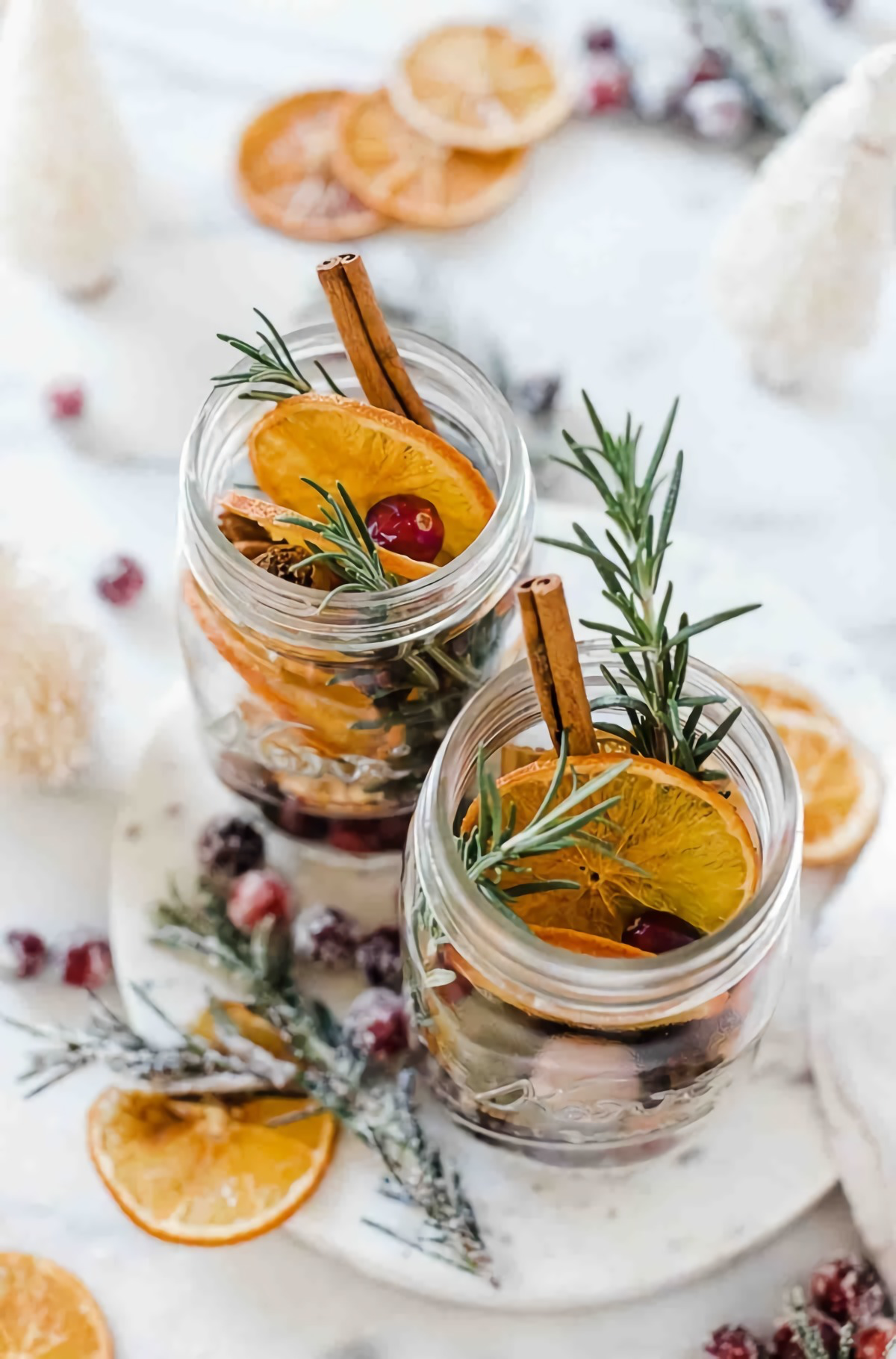
Pro-Tips for a Perfect Simmer:
- Prep Your Ingredients: Don’t just dump everything in. Give your whole spices, like cinnamon sticks or allspice berries, a little whack with the back of a spoon to crack them. This helps the oils escape. Slice your citrus to expose the juicy insides.
- Layer with Care: Put the tough stuff on the bottom—cinnamon sticks, whole cloves, star anise. Then add your fruits. Fresh herbs like rosemary or pine sprigs go in last.
- Start with Cold Water: Cover everything with about two inches of cold water. Starting cold lets the ingredients warm up slowly, which helps create a more well-rounded, deep scent.
- Master the Heat: On a stove, bring it to a bare simmer—just a few lazy bubbles breaking the surface. Then, turn the heat down to the absolute lowest setting. On a slow cooker? Just pop it on ‘low’ and walk away.
- Heads up! Keep it Topped Off: This is the most important step for safety. Water evaporates! Check the pot every 30-45 minutes and add more hot water to keep the ingredients covered. If you let it boil dry, you’ll scorch everything and create a horrible, smoky smell that’s a nightmare to get rid of. It’s also a serious fire risk. The slow cooker method pretty much eliminates this worry.
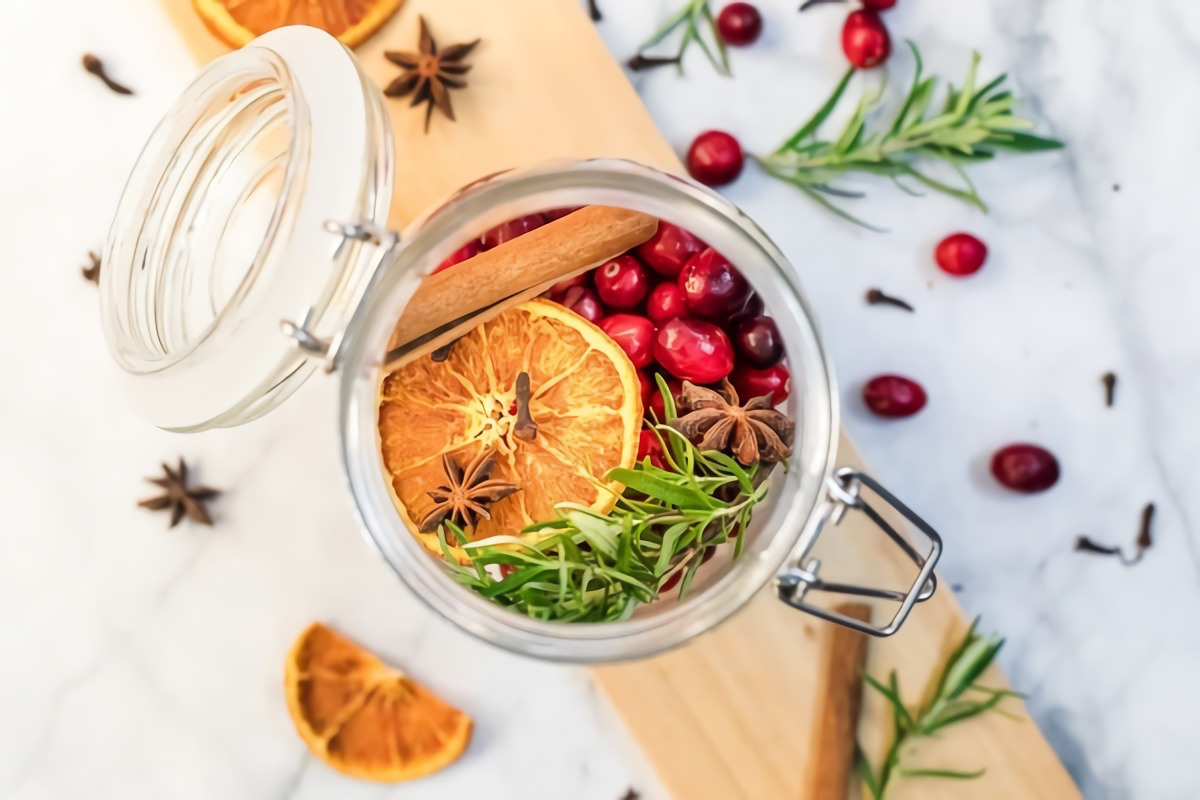
Quick Tip: Can I reuse the ingredients? Yes! You can usually get a second day out of your simmer pot. Just let the pot cool, then stick the whole thing in the fridge overnight. The next day, add some fresh water and maybe a new slice of orange or a fresh sprig of rosemary to liven it up.
A Note on Substitutions: What if you only have ground spices? You can use them in a pinch, but be careful. Ground spices can make the water cloudy and are more likely to burn on the bottom of the pot. As a rule of thumb, use about 1/4 teaspoon of a ground spice (like cinnamon) for every whole stick or teaspoon of berries.
Three Go-To Simmer Pot Recipes:
- The Classic Holiday Kitchen: 1 orange (sliced), 1/2 cup fresh cranberries, 2-3 cinnamon sticks (cracked), 1 tsp whole cloves, 1 small sprig of fresh rosemary. This is the quintessential holiday scent—bright, spicy, and incredibly welcoming.
- The Winter Woods Walk: A few small sprigs from a pine or fir tree, 1 lemon (sliced), 3-4 bay leaves, 1 tsp whole black peppercorns. This blend is crisp, clean, and earthy. It’s fantastic for clearing the air after cooking a big meal. Just make sure your tree trimmings haven’t been treated with chemical fire retardants!
- The Spiced Apple Orchard: 1 apple (sliced), peels from 1 apple (they have tons of aroma!), 2 cinnamon sticks, 4-5 whole allspice berries (crushed), a thumbnail-sized piece of fresh ginger (sliced). It honestly smells like you have an apple pie baking, without any of the work.
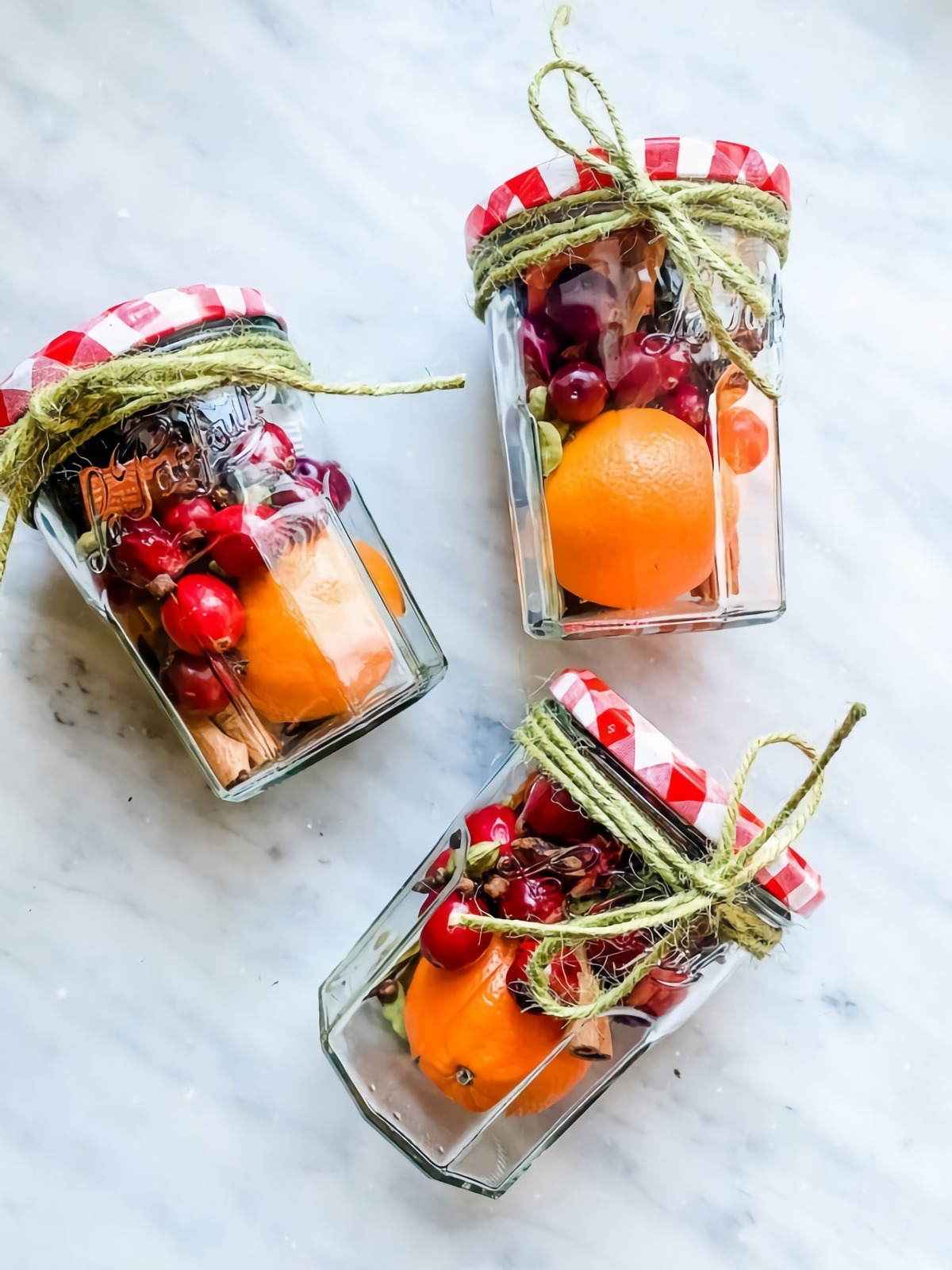
Method 2: The Traditional Orange Pomander
A pomander is part craft project, part air freshener. They have a long and fascinating history as personal air fresheners carried to ward off bad smells. Making one is a wonderfully calming and tactile experience. A well-made pomander can literally last for years, with its scent getting deeper and richer over time.
Gathering Your Materials:
- Oranges: Look for a firm, thin-skinned orange. Thick-skinned varieties are tough to pierce and take forever to dry. Make sure it has no soft spots or blemishes, as those can turn into mold.
- Cloves: Use fresh, high-quality whole cloves. You’ll know they’re fresh if they feel slightly oily and smell potent when you press a fingernail into the bud. You’ll need a lot—about 1/4 to 1/2 cup for one orange.
- A Poking Tool: You can push the cloves in with your thumb, but trust me, it will get very sore, very fast. A thin metal skewer, a small nail, or even a sturdy toothpick makes the job much easier.
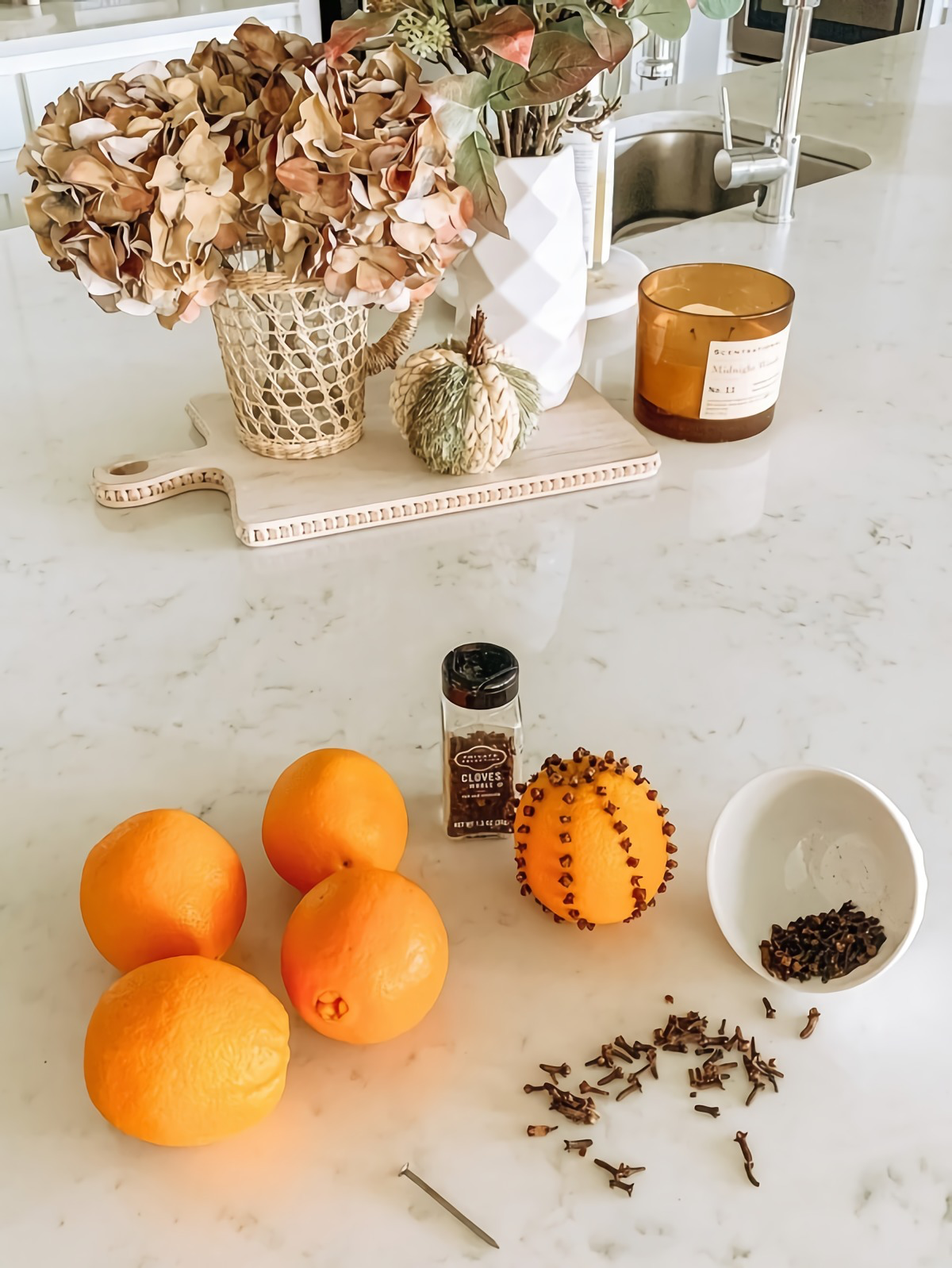
The Basic Technique:
- Plan your design. You can cover the whole orange or create fun patterns like spirals and stars. A nice trick is to tie a ribbon around the orange first, which gives you clean sections to work in.
- Poke and push. Use your tool to poke a hole, then push a clove firmly into it until just the little bud is showing.
- Space them closely. As the orange dries it’s going to shrink, so placing the cloves tightly together ensures it will still look fully covered later.
This basic pomander will smell amazing in a bowl for a week or two. But if you want it to last for years, you need to cure it.
The Curing Method for a Forever-Pomander:
Curing is the traditional process that turns your fresh pomander into a hard, dry, preserved scent ornament that can last for decades. The secret ingredient here is a special spice blend with a fixative.
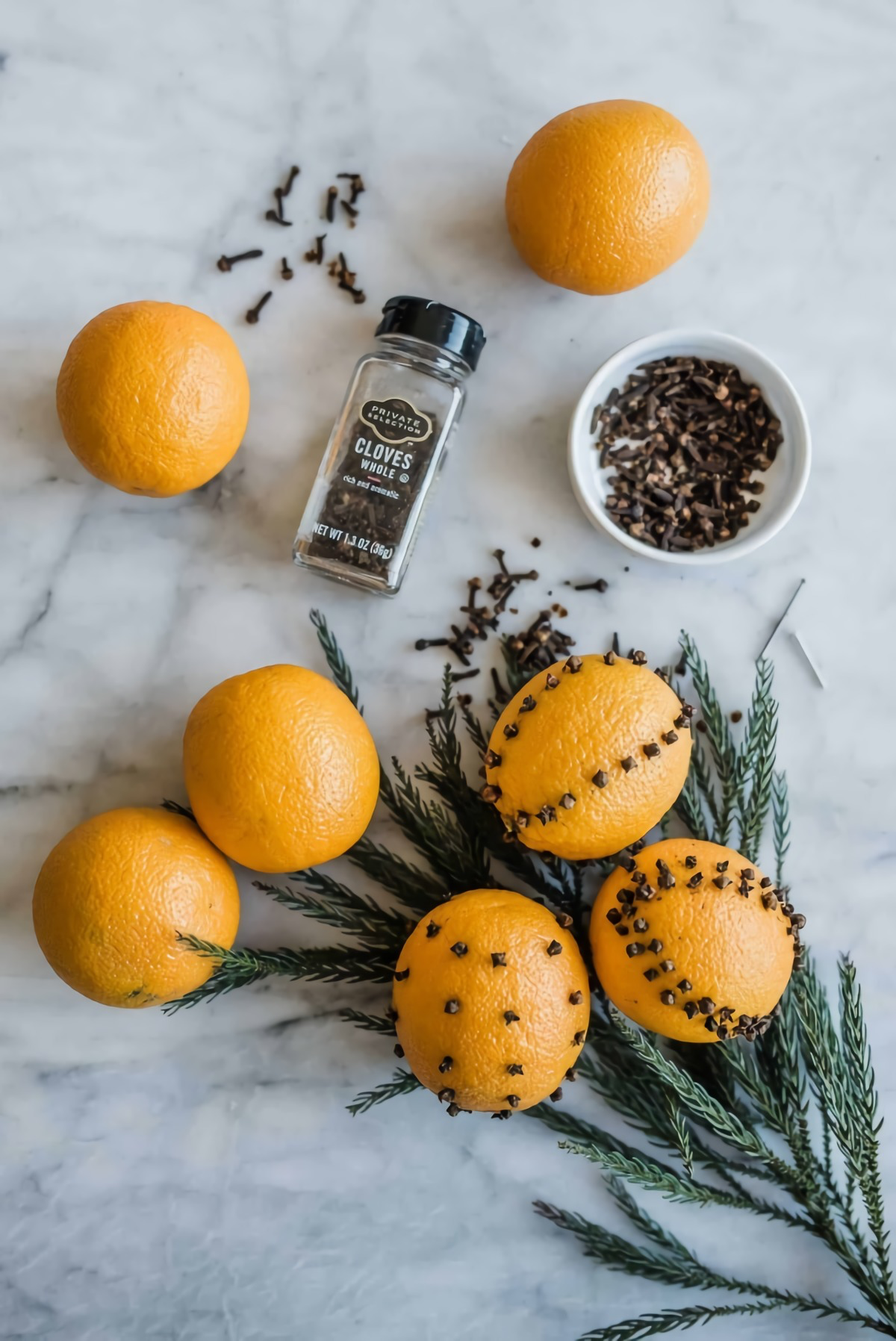
Your Curing Spice Mix:
- 1/4 cup orris root powder (this is the essential fixative!)
- 2 tablespoons ground cinnamon
- 1 tablespoon ground allspice
- 1 tablespoon ground cloves
- 1 teaspoon ground nutmeg
Mix all these powders together in a bowl. By the way, the orris root powder is the most unique ingredient you’ll need. You can find it online from suppliers like Mountain Rose Herbs or sometimes at local health food stores. A bag usually costs between $5 and $8 and will last you for ages.
The Curing Process:
- Coat the Orange: Once your orange is all studded with cloves, roll it generously in the spice mix until it’s completely covered.
- Wrap and Wait: Place the spicy pomander in a paper bag and store it somewhere warm, dry, and dark—the back of a cupboard is perfect.
- Check and Turn: For the first week, check it daily and re-roll it in the spices to absorb any moisture. After that, check it once a week for the next 3 to 6 weeks.
- Know When It’s Ready: It’s fully cured when it feels lightweight, totally hard, and sounds a bit hollow when you tap it.
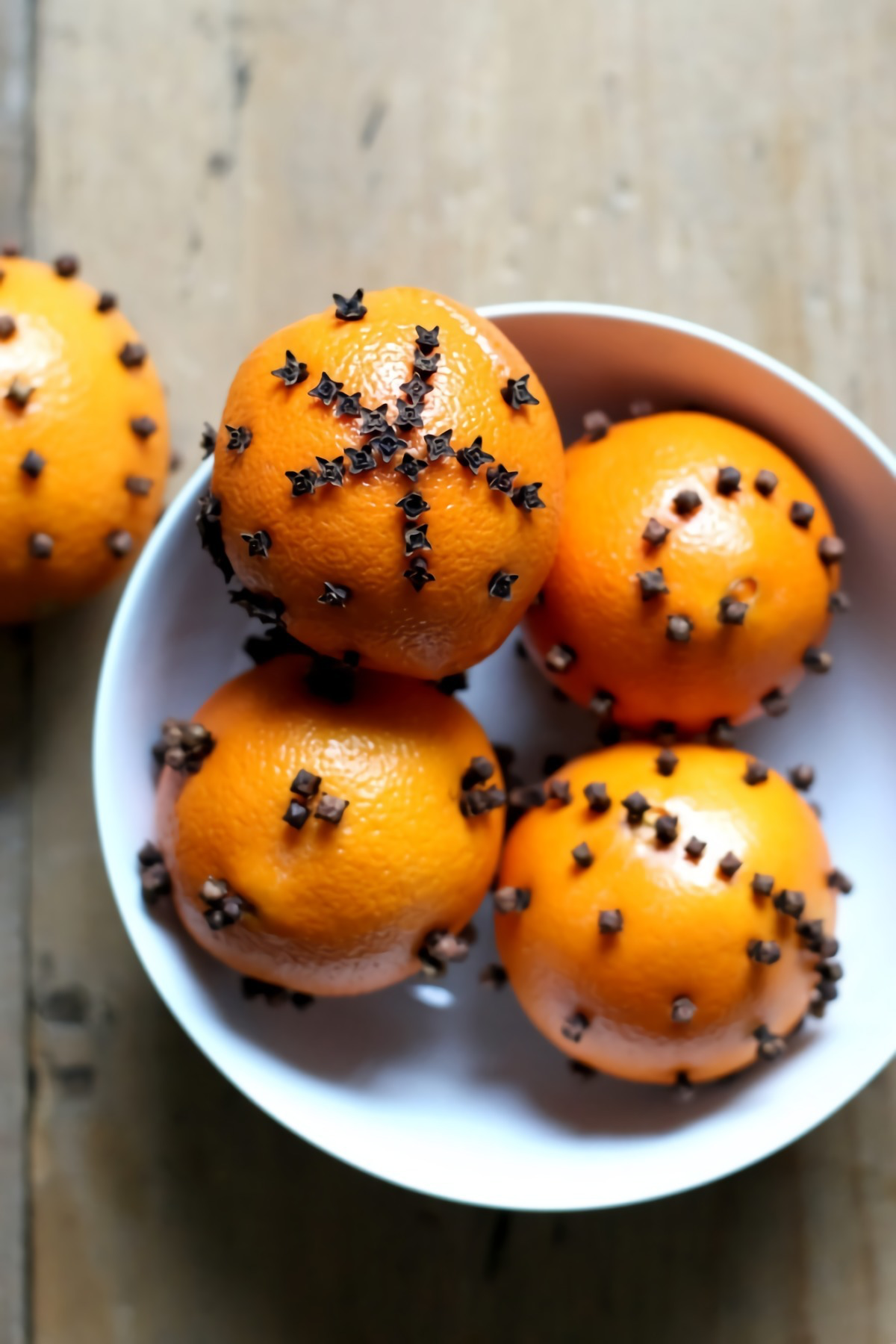
A common pitfall: What if you see a spot of mold? Sadly, you have to toss it and start over. Mold usually means your storage spot was a bit too damp. Try a drier location for your next one!
Method 3: Real, Long-Lasting Dry Potpourri
Let’s be real: most store-bought potpourri is a huge letdown. It smells great for a day and then… nothing. That’s because it’s usually just sprayed with synthetic oils. Handmade, properly cured potpourri is a completely different beast. It’s a project that requires some patience, but the result is a complex, beautiful fragrance that lasts for months.
So, is it worth it financially? A high-end holiday candle can cost $30-$70 and lasts for one season. Your initial investment for potpourri might be around $25-$40 for good essential oils and the fixative, but that will make several large batches that can be refreshed and last much, much longer. It’s a great value over time.
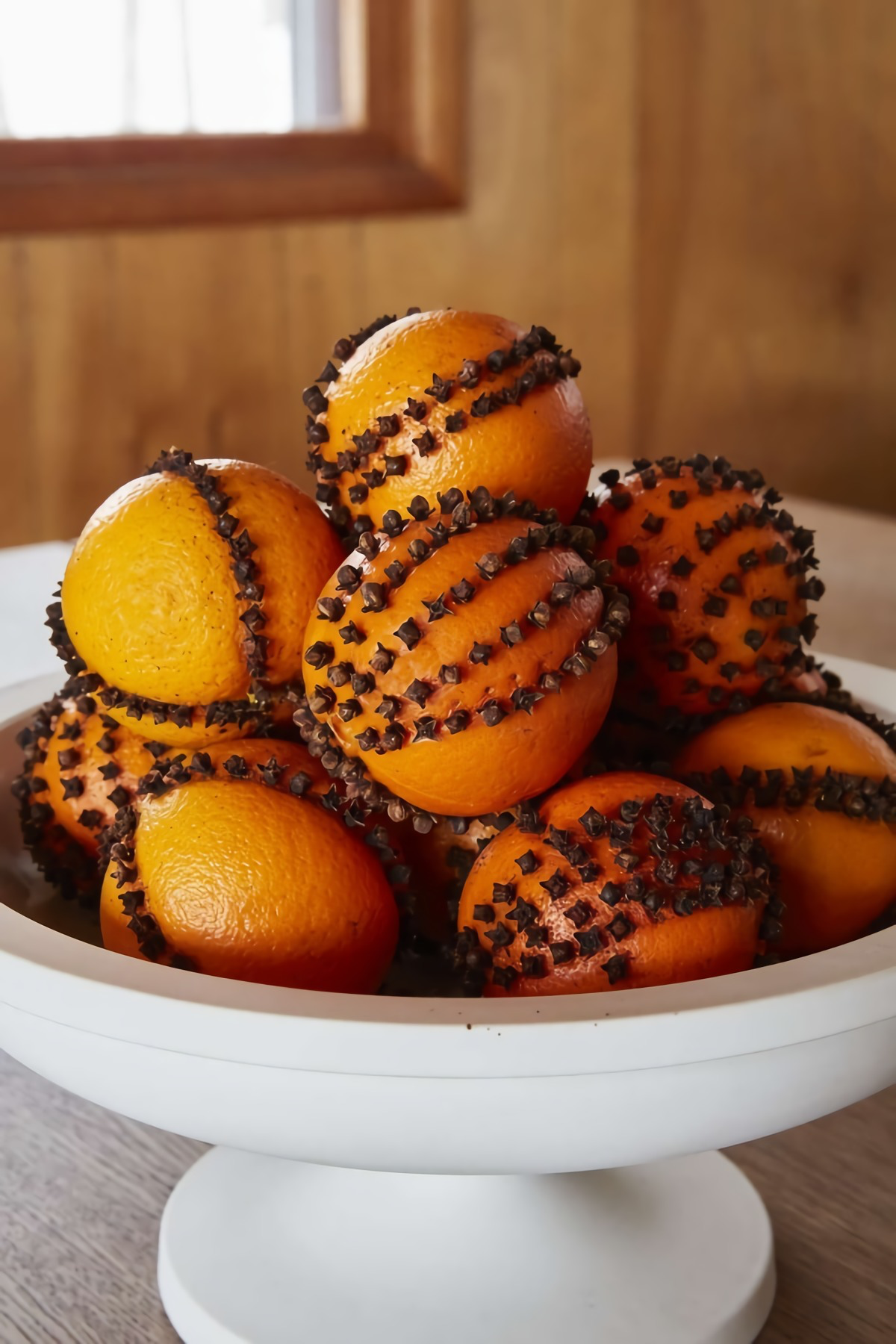
What You’ll Need:
- The ‘Bones’: These are your structural, bulky items. Think dried orange slices, wood chips, pinecones, cinnamon sticks, and star anise.
- The ‘Fillers’: These add color and texture. Dried rosebuds, bay leaves, or eucalyptus are great choices.
- The Fixative: This is non-negotiable for a lasting scent. Again, powdered orris root is the gold standard. Use about 1 tablespoon for every cup of dried botanicals.
- The Scent: Use high-quality, pure essential oils, not cheap ‘fragrance oils’. For a classic holiday blend, try a mix of sweet orange, cinnamon leaf, clove bud, and fir needle oils.
The Curing Method That Actually Works:
- Prep Everything: Make sure all your botanicals are BONE DRY. Any moisture will cause mold. You can dry your own citrus slices in a low oven (around 200°F/95°C) for a few hours until they’re brittle. Quick tip: To prep pinecones, wash them and bake them on a foil-lined sheet at 200°F for about 30 minutes. This kills any lingering bugs and helps them open up nicely.
- ‘Charge’ the Fixative: In a small glass bowl, mix your orris root powder with your essential oils. For a 4-5 cup batch of potpourri, I’d start with 15 drops of sweet orange, 10 of cinnamon, 5 of clove, and 8 of fir. Stir it up until it’s like damp, crumbly sand. Let it sit for 20 minutes to really absorb the oils.
- Combine: Put all your dried botanicals in a large container with a tight lid—a big glass jar or a sealed tub is perfect. Sprinkle the scented fixative all over them.
- The Waiting Game: Seal the container and give it a gentle shake. Now for the hard part… you have to wait. Put the container in a cool, dark place for at least two weeks, but up to six weeks is even better. Give it a shake every few days. During this time, the fixative is slowly transferring the scent to everything else, and the individual smells are melding into one cohesive fragrance.
- Display and Refresh: After curing, it’s ready! Put it in a pretty bowl. When the scent starts to fade after a few months, you can usually revive it. Just toss it back in its curing container, add a few more drops of essential oil, seal it, shake it, and let it sit for another week. Good as new!
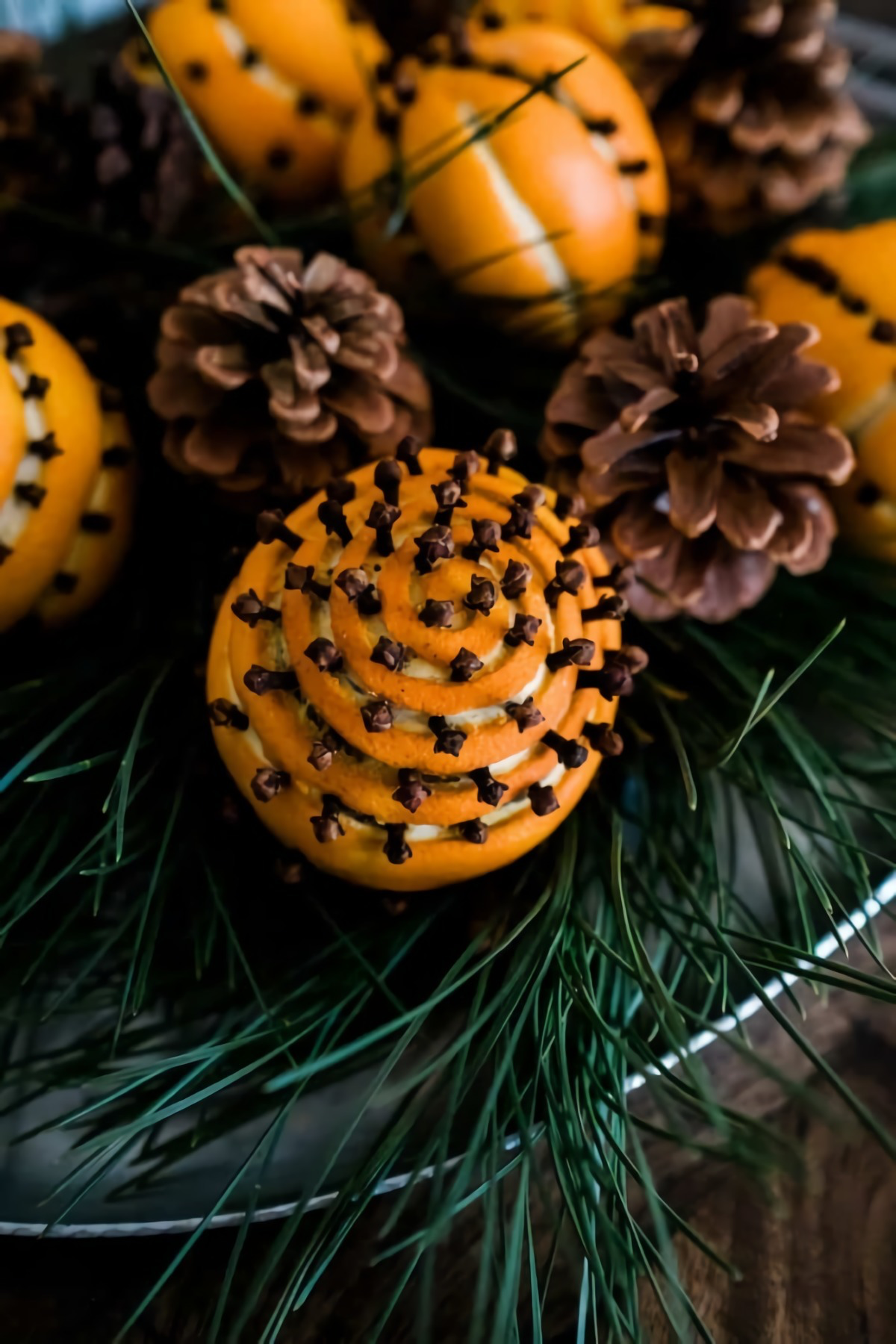
A Quick Word on Safety & Pets
It’s so important to remember that ‘natural’ doesn’t automatically mean ‘harmless.’ It’s on us to create an environment that’s safe, not just fragrant.
Fire Safety First: I can’t say this enough: NEVER leave a simmering pot unattended on a hot stove. It is a massive fire hazard. If you want all-day fragrance, please, please use a modern slow cooker. They are literally designed for this.
Human Sensitivities: Some people are very sensitive to airborne scents, even natural ones. Things like pine and cinnamon can be irritants for those with asthma or chemical sensitivities. If you’re having guests over, it’s always a kind gesture to keep the scent light or even ask them beforehand if strong smells bother them.
A Critical Warning for Pet Owners: This is a big one. Many essential oils are toxic to pets, especially cats, whose livers can’t process certain compounds. Inhaling or ingesting them can be very dangerous. Oils like pine, citrus, and cinnamon can be problematic in high concentrations. While a simmer pot is generally safer because the scent is diffused in water and steam, potpourri with its concentrated oils needs to be handled with care. If you have pets, especially curious cats, place your potpourri somewhere they absolutely cannot reach. When in doubt, always check with your vet.
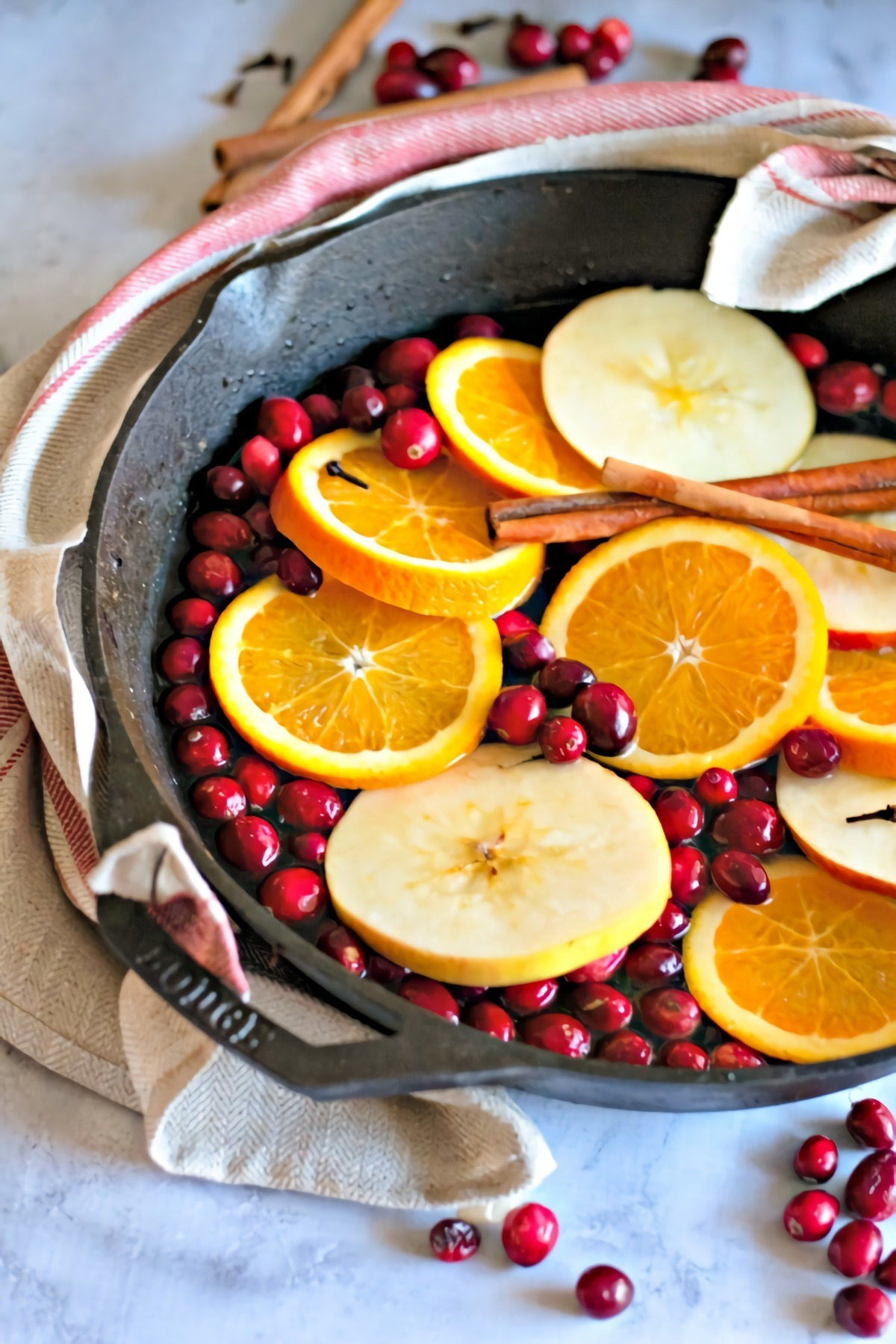
At the end of the day, crafting the scent of your home is a deeply personal and rewarding act. It connects you to the season and lets you create an atmosphere that is truly, authentically your own. Happy scent-making!
Inspiration:

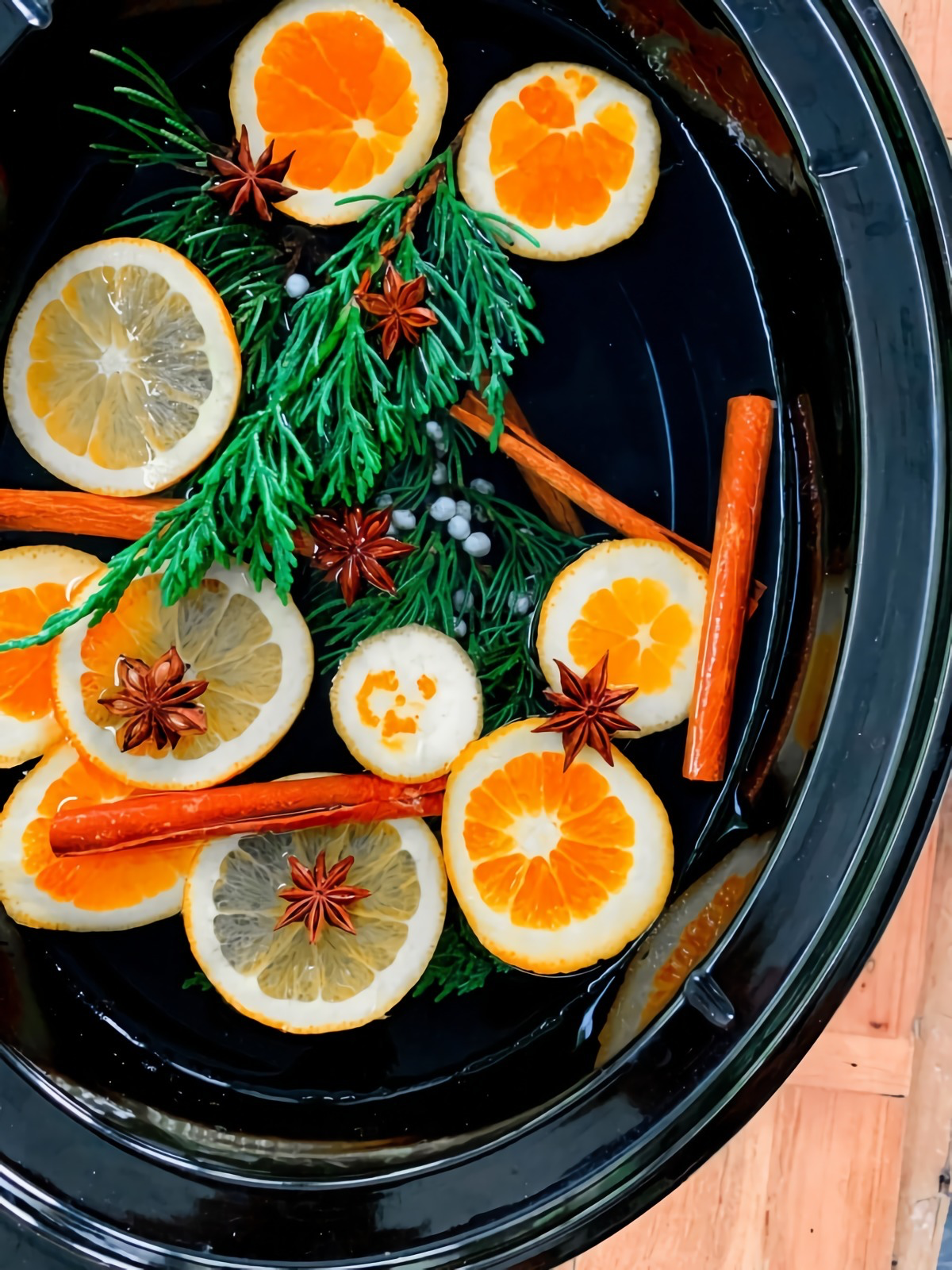
Scent is the only sense directly linked to the brain’s limbic system, which governs memory and emotion.
This biological shortcut is why the scent of cinnamon or pine can instantly evoke vivid childhood memories. When you craft a natural holiday fragrance, you’re not just making the air smell pleasant; you’re creating powerful emotional cues that can make your home feel warmer, more nostalgic, and deeply personal for you and your guests. It’s an invisible layer of decoration.

How can I make my dry potpourri’s fragrance last longer than a week?
The secret is a ‘fixative.’ Most homemade potpourri loses its scent quickly because essential oils evaporate. A fixative, like orris root powder or vetiver root, slows this process dramatically. For every cup of dried botanicals, mix in one tablespoon of orris root powder before adding your essential oils. For high-quality, long-lasting oils, consider brands like Plant Therapy or doTERRA, which offer pure single notes like Siberian Fir or Clove Bud.
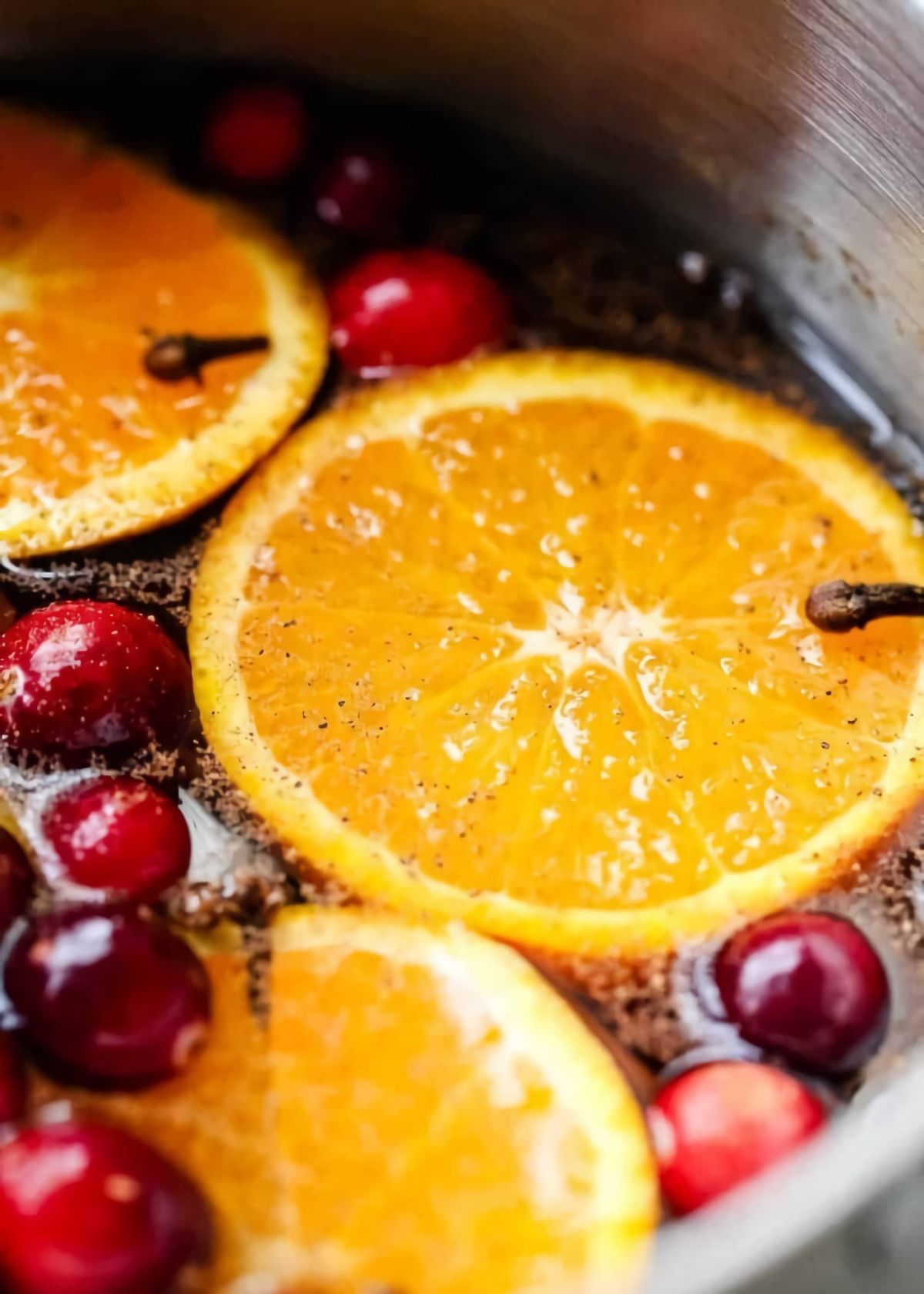
Move beyond the classic orange and cinnamon combination. For a crisp, sophisticated winter scent, try a ‘Winter Forest’ simmer pot. Combine fresh pine or fir clippings (just a small sprig), a few juniper berries, a slice of lemon, and a single bay leaf. The aroma is clean and invigorating, like a walk through a snowy wood, and provides a beautiful alternative to heavier spice-based scents.
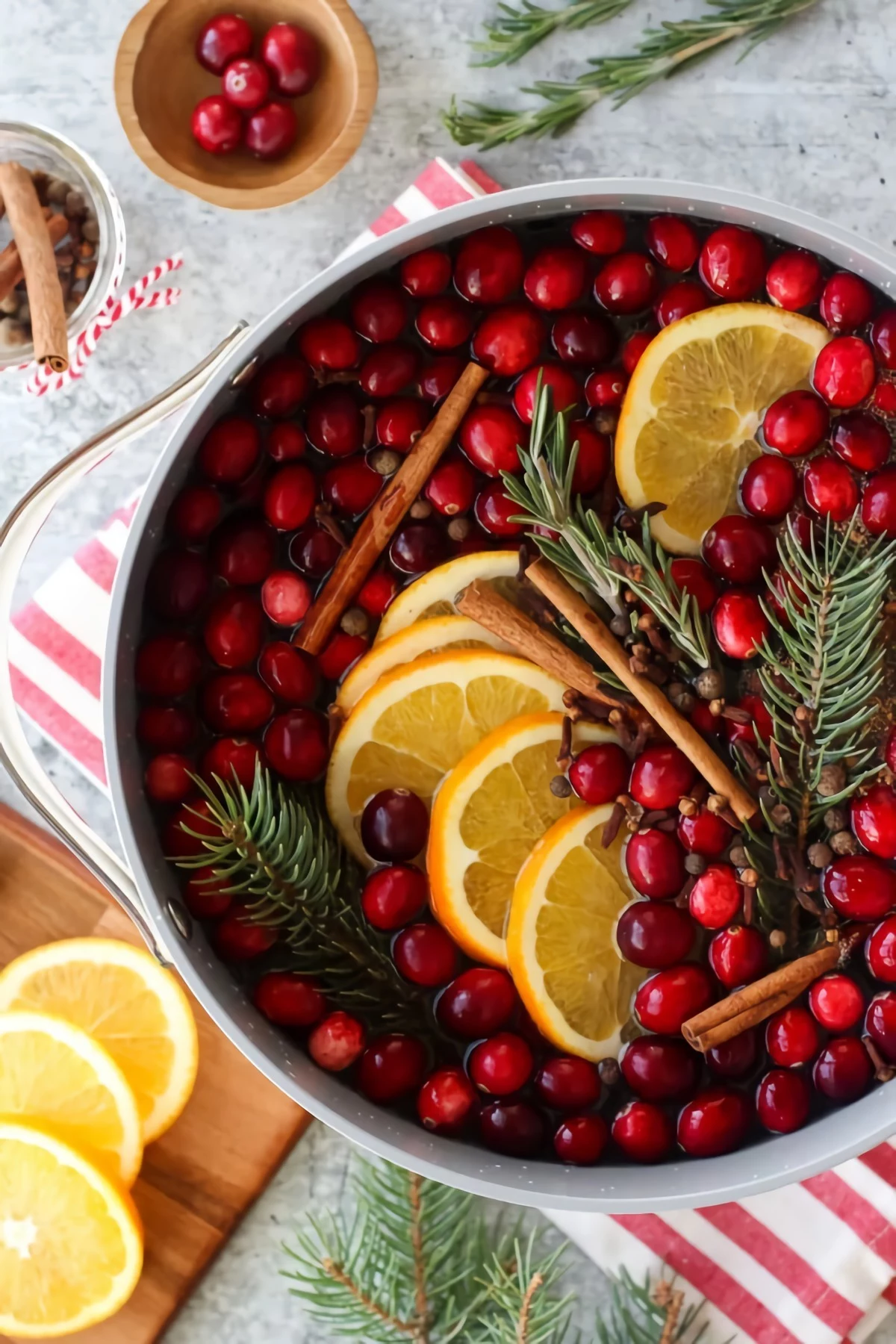
Classic Pomander: This involves studding the entire surface of an orange with cloves, creating a dense, highly fragrant ball. It’s a traditional look, often hung with a ribbon, that releases its scent slowly as the orange dries over weeks.
Modern Pomander: This approach uses cloves more sparingly to create geometric patterns, spirals, or even initials. The focus is as much on the visual design as the scent. These are best displayed in a simple ceramic bowl as a graphic centerpiece.
Both are beautiful, but your choice depends on whether you prioritize intense, long-lasting fragrance or a striking visual statement.
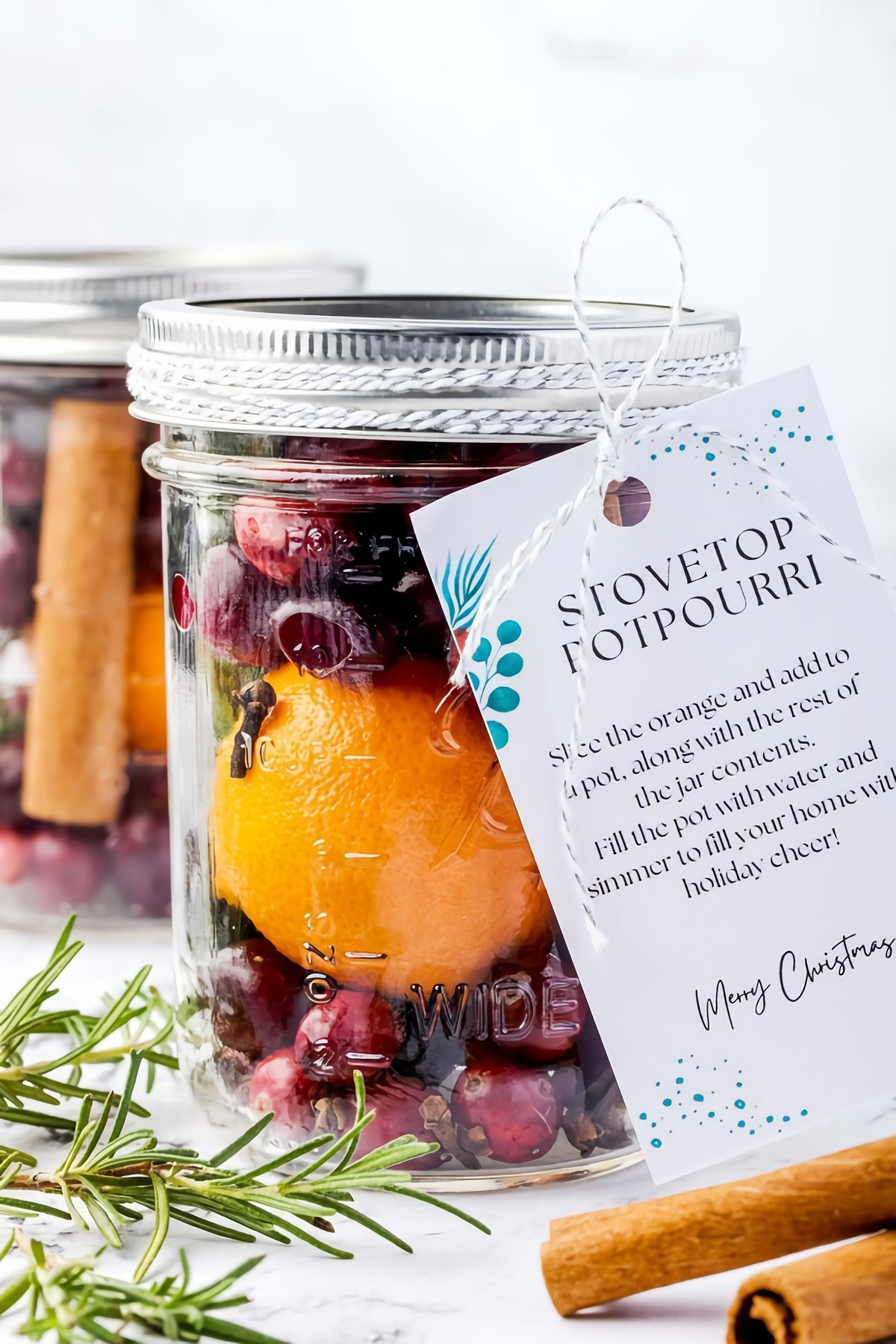
- Add unexpected depth to your simmer pot.
- Surprise guests with a unique, gourmet aroma.
- Use spices you may already have in your pantry.
The secret? Go beyond the standard cinnamon stick. Just a few additions can transform your blend. Try dropping in a few star anise pods for a touch of licorice sweetness, a cracked cardamom pod for an exotic flair, or a few slices of fresh ginger for a zesty, warming kick that beautifully complements citrus.
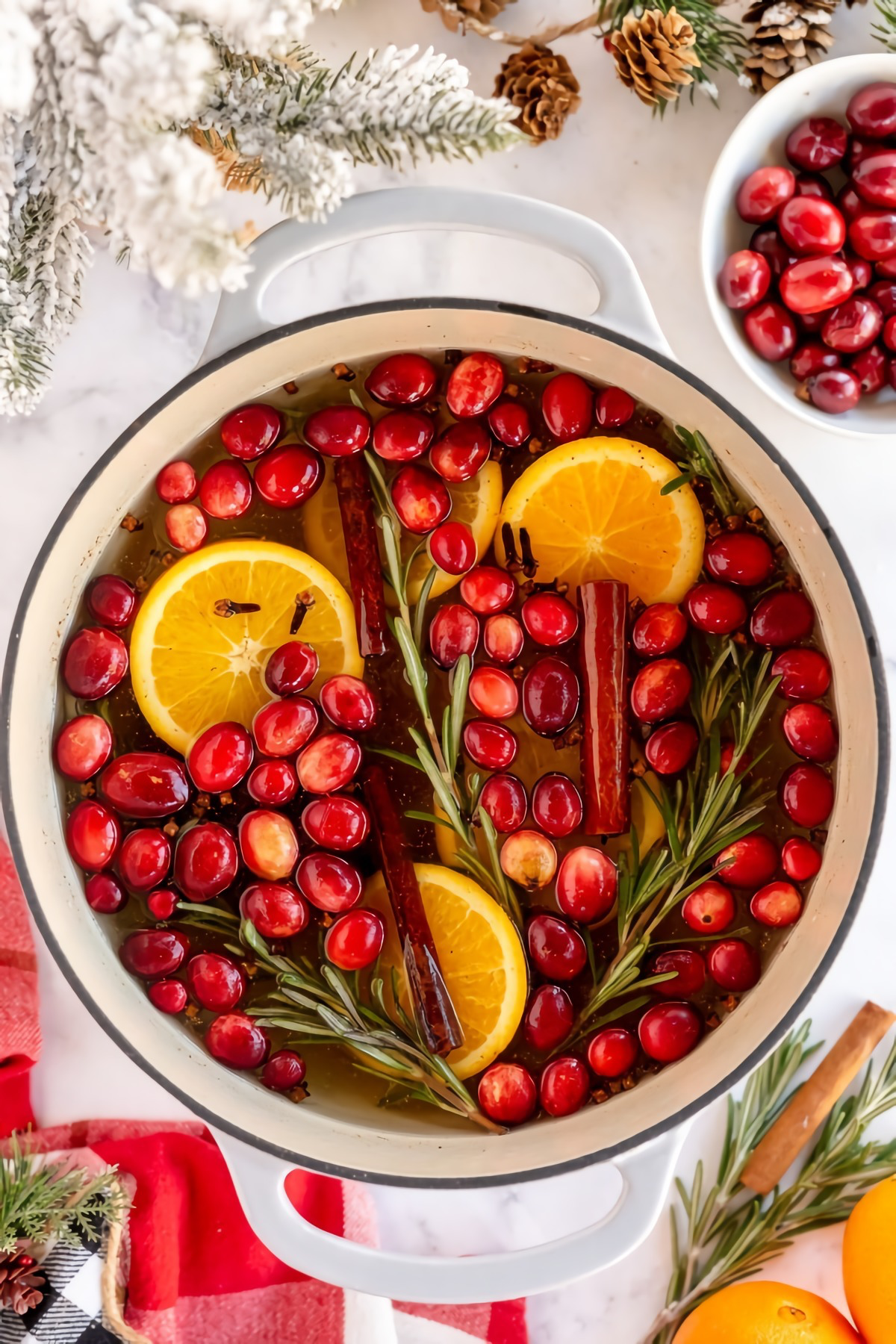
The #1 Simmer Pot Mistake: Letting the pot boil dry. Not only does this create a terrible, scorched smell that’s hard to get rid of, but it can also permanently damage your saucepan. The fix is simple: use a dedicated, inexpensive pot and always set a timer on your phone to remind you to check the water level every 30-45 minutes. A gentle simmer, not a rolling boil, is key.
Once your simmer pot ingredients have lost their fragrance, don’t just throw them in the trash. Give them a second life:
- Compost: All the natural elements—fruit peels, spices, herbs—are fantastic additions to your compost bin, adding valuable organic matter.
- Natural Firestarters: Let the ingredients dry out completely on a baking sheet. Once bone-dry, you can bundle them in a small piece of newspaper with a bit of dryer lint to create aromatic firestarters for your fireplace.










